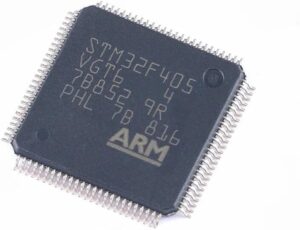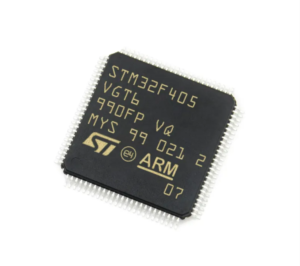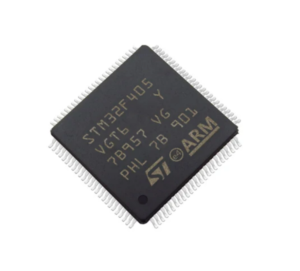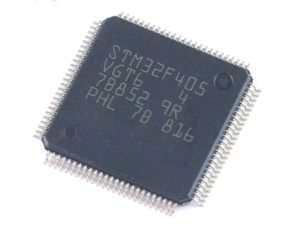 Protective STM32F405VG Microprocessor Content Restoration
Protective STM32F405VG Microprocessor Content Restoration
Protective STM32F405VG Microprocessor Content Restoration is a process to unlock the secured microcontroller STM32F405VG readout-protection system and copy embedded firmware from STM32F405VG flash memory in the format of binary or heximal;

Protective STM32F405VG Microprocessor Content Restoration is a process to unlock the secured microcontroller STM32F405VG readout-protection system and copy embedded firmware from STM32F405VG flash memory in the format of binary or heximal;
The internal structure of the STM32F405VG microcontroller from STMicroelectronics is complex and includes several key components that enable its functionality. Here’s an overview of the internal structure:
ARM Cortex-M4 Core: The STM32F405VG is built around the ARM Cortex-M4 core, which serves as the central processing unit (CPU). The Cortex-M4 core is a high-performance 32-bit RISC processor designed for embedded applications. It features a Harvard architecture with separate instruction and data buses, a pipelined architecture, and supports a wide range of instructions and addressing modes.

보호 STM32F405VG 마이크로프로세서 콘텐츠 복원은 보안 마이크로컨트롤러 STM32F405VG 판독 보호 시스템의 잠금을 해제하고 보안 MCU STM32F405VG 플래시 메모리에서 임베디드 펌웨어를 바이너리 또는 16진수 형식으로 복사하는 프로세스입니다.
Memory: The microcontroller typically includes various types of memory:
Flash Memory: This is used for storing the firmware (program code) of the microcontroller. The STM32F405VG typically comes with up to 1 MB of Flash memory.
SRAM (Static Random Access Memory): SRAM is used for storing data and variables during program execution. The STM32F405VG typically includes 192 KB of SRAM.
Registers: Registers are small, high-speed memory locations within the CPU used for temporary data storage and for holding control and status information.
Peripherals: The STM32F405VG incorporates a wide range of peripherals, including but not limited to:
USART, SPI, I2C interfaces for serial communication.
ADC (Analog-to-Digital Converter) and DAC (Digital-to-Analog Converter) channels for analog signal processing.
CAN (Controller Area Network) interfaces for automotive and industrial applications.
USB (Universal Serial Bus) interface for connectivity with external devices.
Timers, PWM (Pulse Width Modulation) channels, and GPIO (General-Purpose Input/Output) pins for various timing and control functions.

Phục hồi nội dung bảo vệ STM32F405VG vi xử lý là một quá trình để mở khóa vi điều khiển bảo mật STM32F405VG hệ thống bảo vệ đọc và sao chép phần sụn nhúng từ bộ nhớ MCU STM32F405VG flash được bảo mật ở định dạng nhị phân hoặc heximal;
DMA (Direct Memory Access) controller for efficient data transfer between peripherals and memory without CPU intervention.
Clock and Reset Management: The microcontroller includes a clock management unit responsible for generating and distributing clock signals to different parts of the device. It also includes a reset controller that manages the reset signals and initializes the device during power-up.
Power Management: Power management features are integrated into the microcontroller to regulate power consumption and optimize energy efficiency. This includes various low-power modes and features such as voltage scaling to adjust the operating voltage based on performance requirements.
Bus Matrix: The bus matrix is responsible for managing the data flow between the different components of the microcontroller, ensuring efficient communication and access to resources.

सुरक्षात्मक STM32F405VG माइक्रोप्रोसेसर सामग्री बहाली रीडआउट-प्रोटेक्शन सिस्टम STM32F405VG सुरक्षित माइक्रोकंट्रोलर को अनलॉक करने और सुरक्षित एमसीयू STM32F405VG फ्लैश मेमोरी से बाइनरी या हेक्सिमल के प्रारूप में एम्बेडेड फर्मवेयर कॉपी करने की एक प्रक्रिया है;
Debug and Trace Unit: The microcontroller includes a debug and trace unit that facilitates software debugging and system analysis by providing features such as breakpoint control, watchpoints, and real-time tracing of program execution.
Overall, the internal structure of the STM32F405VG is designed to provide a balance of performance, flexibility, and power efficiency, making it suitable for a wide range of embedded applications.